

Uh oh...
It appears that you're using a severely outdated version of Safari on Windows. Many features won't work correctly, and functionality can't be guaranteed. Please try viewing this website in Edge, Mozilla, Chrome, or another modern browser. Sorry for any inconvenience this may have caused!
Read More about this safari issue.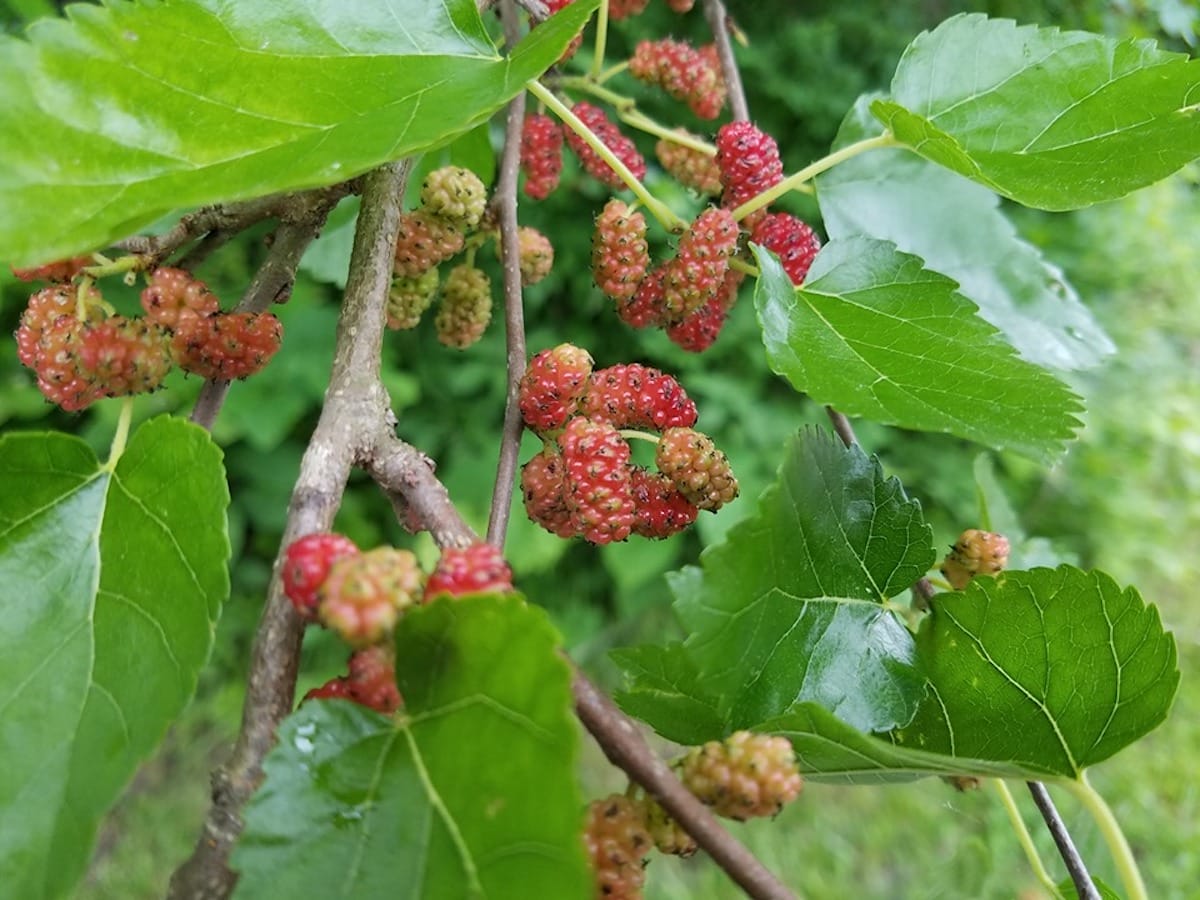

For the experienced forager, Arkansas’s fields and forests offer a multitude of wild edibles. Our climate is mild enough that there are edible plants available nearly all year long if you know what you are looking for. Wild foraging was once a way of life. Native Americans, early settlers and maybe even your grandmother all regularly foraged for food. Changing times, busy lives and technology have drawn us away from our roots.
My interest in wild edibles began at summer camp when I received a merit badge in outdoor survival, a portion of which covered foraging for edible plants in the woods. When I was a little older, I experimented with making sumac lemonade and prickly pear lemonade. In recent years, I have made violet jelly, dandelion green salad, mulberry syrup, wild blackberry pie and sautéed morel mushrooms.
While the necessity is not what it once was, hunting for wild edible plants is still a part of many people’s lives. Today, let’s start with ten common edible plants in Arkansas that are relatively easy to identify.
Before You Begin Foraging
Just as fruits and vegetables have a season, so do wild edibles. Not all wild edibles are available all of the time. Understanding which plants grow during the current time of year will help you to have a successful foraging experience.
When foraging for wild plants, always get permission. Many parks and nature preserves do not allow foraging. Do not trespass on land to collect wild edibles.
Please also be cautious of areas that may have been sprayed with weed killers or other chemicals. It is recommended that you always collect a minimum of 20 feet from any highway in order to avoid chemical residue.
It is always recommended that you work with someone well-versed in wild edibles. Many harmful plants that will make you sick can mimic plants that are edible. Sometimes only portions of a plant are edible, and sometimes the plant must be cooked or prepared in a very specific way. Never eat anything unless you are 100% certain of what it is and how it should be prepared. Books or articles like this one are helpful tools but should not be a substitute for a knowledgeable person.

1. Acorn
Habitat: Oak trees can be found in yards and forested areas.
When to Harvest: In the fall.
Edible Parts: Acorns are edible but can be very bitter due to the tannins found in them. White oak is usually the least bitter.
Preparation: Can be used similar to other nuts. Grind into meal or flower for use as grits or in baking.
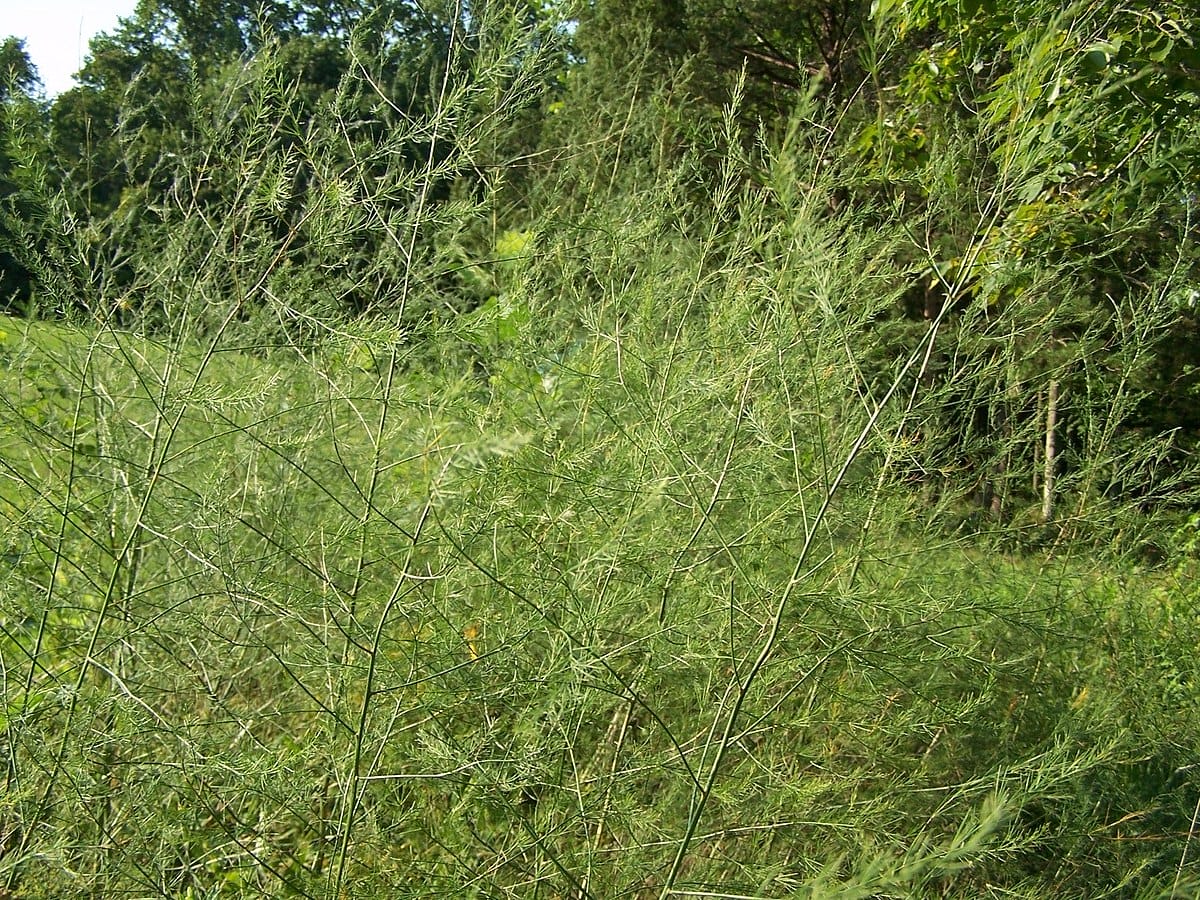
2. Wild Asparagus
Habitat: Wild Asparagus is not actually “wild.” The plants are usually found near to gardens or homesteads where asparagus was once planted. As birds and other wildlife ate from the plants and then pooped out the seeds, the plants spread and became “wild.” Wild asparagus is common along fencerows or in ditches. Be especially careful to avoid areas where chemicals may have been sprayed.
When to Harvest: Early spring
Edible Parts: The tender stalks. Be sure to harvest before they have branched, or they will be too woody.
Preparation: Prepare as you would cultivated asparagus.

3. Wild Blackberries
Habitat: Throughout the woods and along the forest edges. There are over 600 different species of wild blackberries and raspberries!
When to Harvest: Mid-summer
Edible Parts: Ripe Berries (Leave unripe berries and return in 7-10 days for a second harvest.)
Preparation: The berries can be eaten raw or used in syrup, pies, and cobbler similar to other berries.
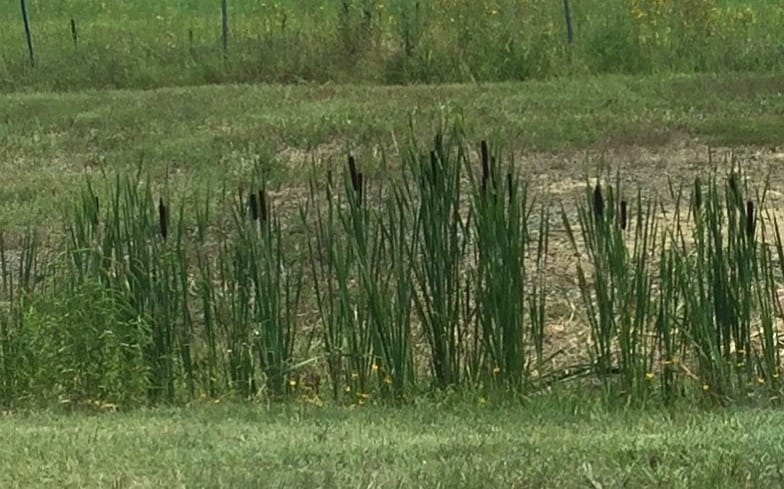
4. Cattail
Habitat: Along streams and ponds or other wet areas.
When to Harvest: Depends on which portion of the plant you are harvesting.
Edible Parts: Male flower spikes and pollen, cattail head and rhizomes.
Preparation: Flower spikes can be prepared similar to corn on the cob. Cattail heads (the corn dog looking part) can be cooked as a vegetarian meat substitute.

5. Dandelions
Habitat: Often found in lawns.
When to Harvest: Spring for leaves and flowers; Spring, summer and fall for the taproot
Edible Parts: The whole plant, including the taproot. Some people find dandelions to be very bitter.
Preparation: Greens are often used in salads. Remove the green base from the flowers to eliminate the bitter taste and use in salads or even baked goods.
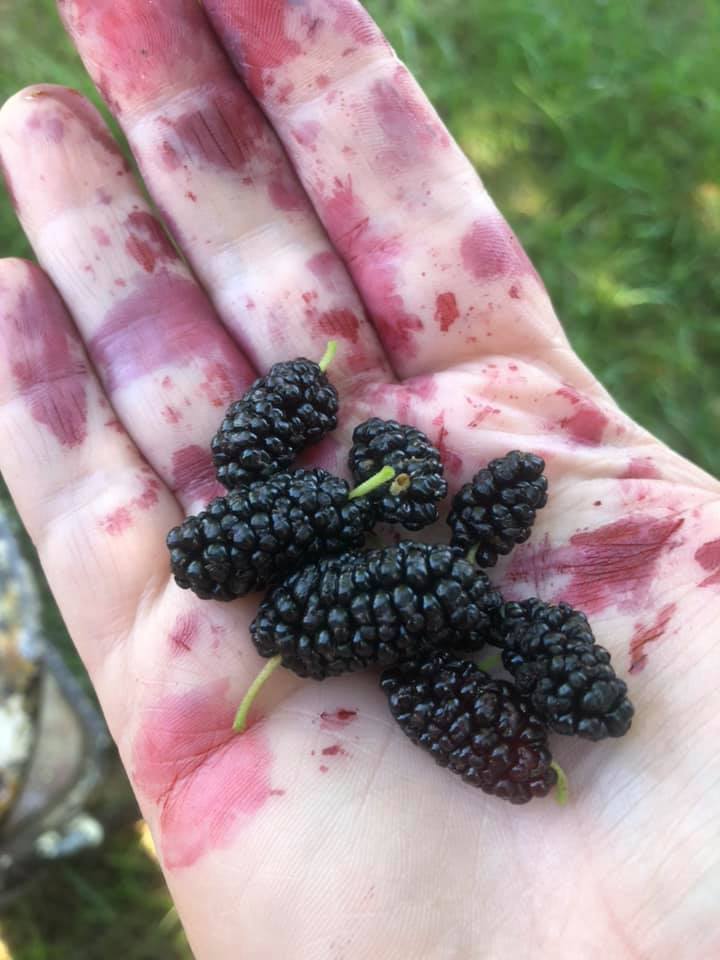
6. Mulberries
Habitat: Along the edge of the woods or near streams.
When to Harvest: Spring and Early Summer
Edible Parts: Ripe Berries (Lay out a sheet and shake branches. The ripe fruit will fall to the ground.)
Preparation: The berries can be eaten raw or used in syrup, pies, and cobbler similar to other berries.

7. Mushrooms
For information on foraging mushrooms, please see our article on Arkansas Mushroom Foraging.
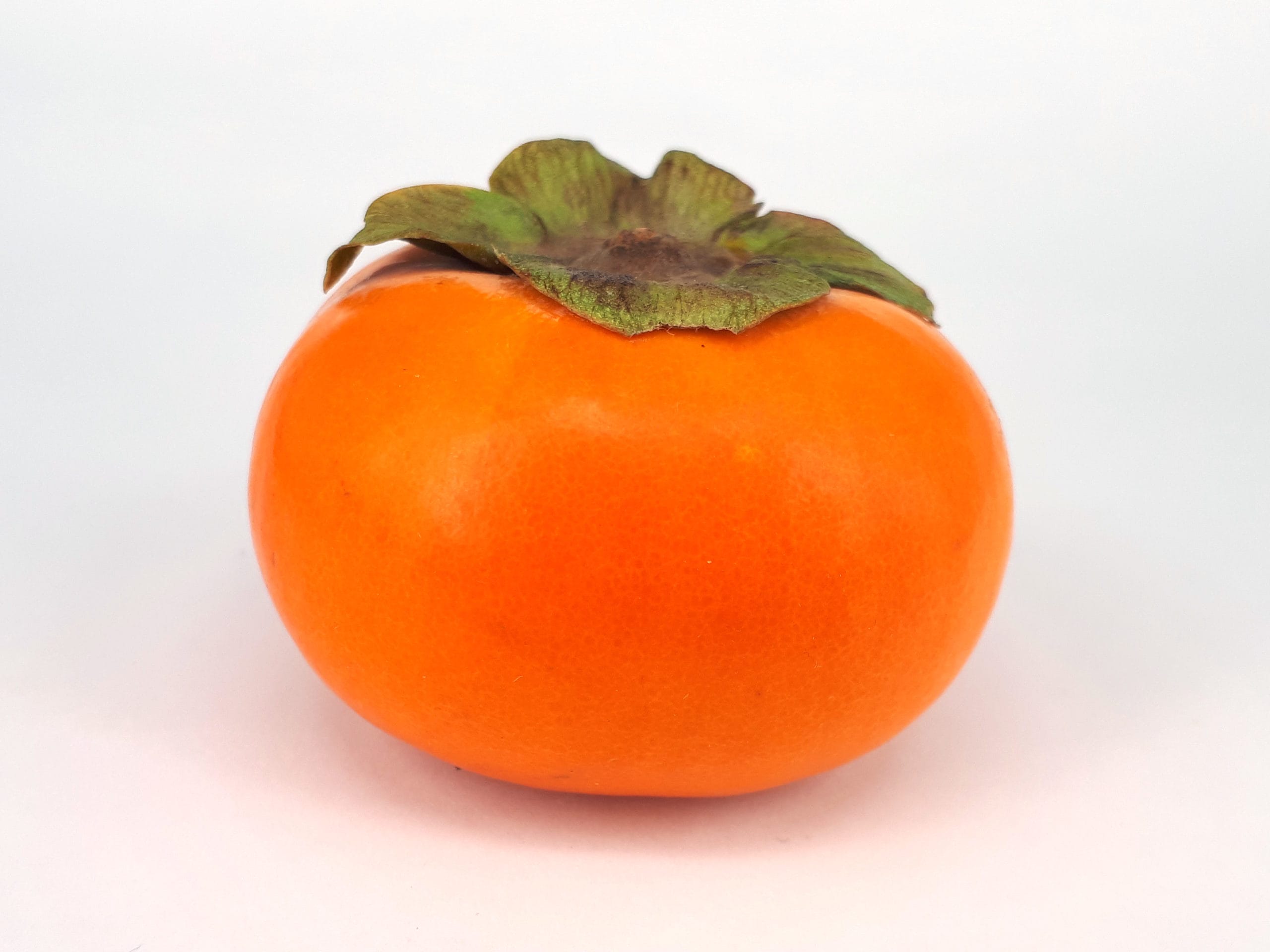
8. Persimmon
Habitat: Prefers moist soil like found in the river bottoms.
When to Harvest: Fall – the ripe fruits will fall to the ground.
Edible Parts: Leaves, fruits and seeds.
Preparation: Fruit may be eaten raw or cooked, leaves can be used as tea. The seeds can be roasted and used as a coffee substitute.
Fun Fact: Some say they can also predict the weather.
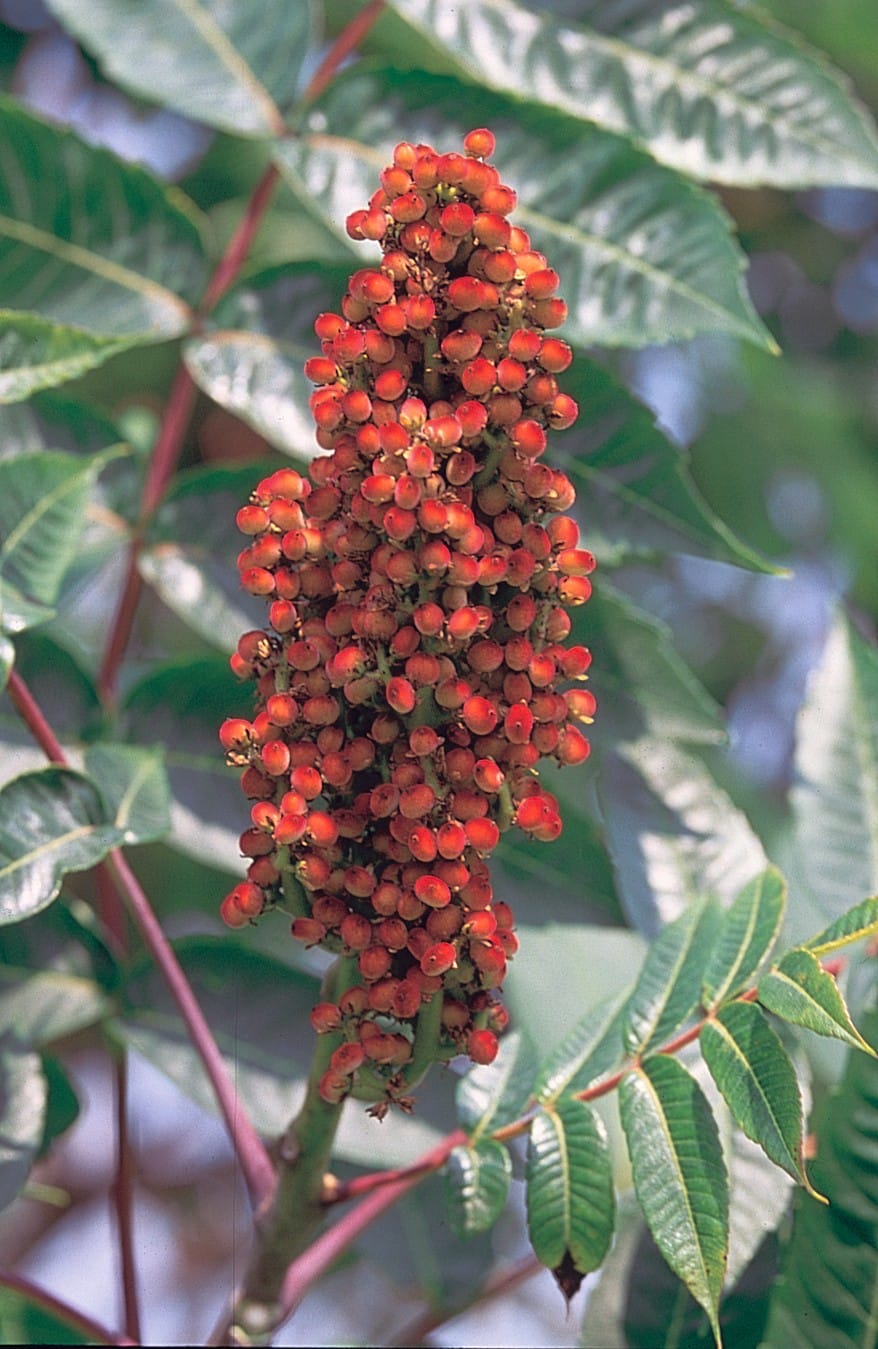
9. Sumac
Not to be confused with Poison Sumac, which is a different plant. However, some people with severe allergies to poison sumac, cashews, pistachios or mangoes may not tolerate “safe” sumacs.
Habitat: Along the edge of the woods.
When to Harvest: Summer
Edible Parts: Red fruit clusters
Preparation: Steep the berries and prepare as you would lemonade.
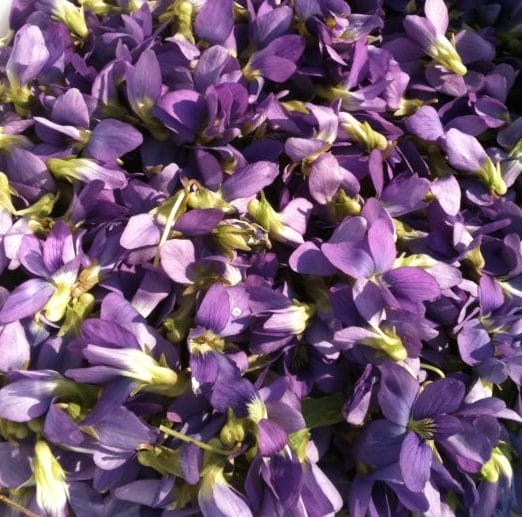
10. Violets
Habitat: Often found in shady areas but will spread to sunny spots. Considered a nuisance by some because it can take over a yard.
When to Harvest: Early Spring
Edible Parts: Both the flowers and the leaves are edible.
Preparation: Use the leaves in a salad or cook similar to other cooked greens. The flowers can be made into jelly, used in salads or even placed on cakes as an edible decoration. Click here for a recipe for violet jelly.
For Further Education
Several of the Arkansas Game and Fish Commission Nature and Education Centers offer wild edible workshops. Click here for a list of centers so you may contact the one closest to you.
Several state parks also regularly offer wild edible plant workshops. Please contact your closest state park for scheduling information.
Recommended Resources
Books
The Scout’s Guide to Wild Edibles – Mike Krebill
Edible Wild Plants – Thomas S. Elias and Peter A. Dykeman
Websites
Facebook Groups
Header photo by Helen J. Oetken.
Join the Conversation
Leave a Comment
9 responses to “10 Wild Edible Plants in Arkansas”
 Leave a Reply
Leave a Reply
We do the work.
You check your email.
Sign up for our weekly e-news.
Get stories sent straight to your inbox!












 Leave a Reply
Leave a Reply
[…] Learn more about wild foraging. […]
[…] 10 Wild Edible Plants in Arkansas […]
What is the berry that is in the first picture?
The berry that is in the first picture is the mulberrry.
[…] more ideas about plants you can find beyond your front yard, check out this great story about foraging in Arkansas fields and forests featured on Only in Arkansas in […]
[…] 10 Wild Edible Plants in Arkansas – Only In ArkansasJun 18, 2019 … Habitat: Along streams and ponds or other wet areas. When to Harvest: Depends on which portion of the plant you are harvesting. Edible Parts: … […]
My dad planted two wild mulberry trees in our yard when I was a child. He had dug them up in the woods while he was hunting. The trees did great and made lots of fruit for the birds. I tried eating them, but they were so cloyingly sweet, I nearly threw up. I don’t think my mother knew that she could make jellies or desserts out of them.
How can I download info for free
[…] 10 Wild Edible Plants in Arkansas The Surprisingly Exciting World of Mushroom Foraging Finding the Elusive Morel Mushroom […]